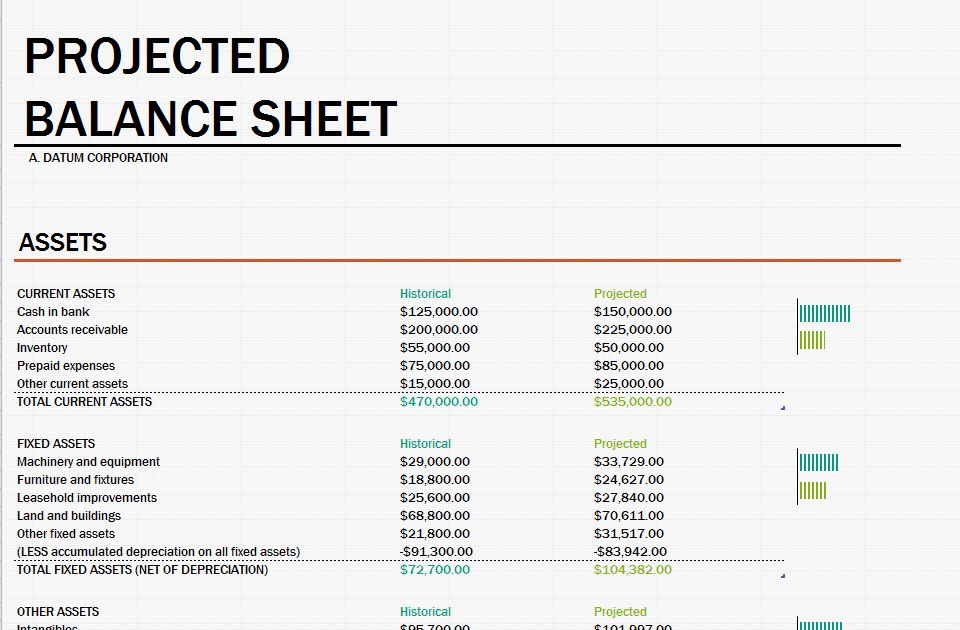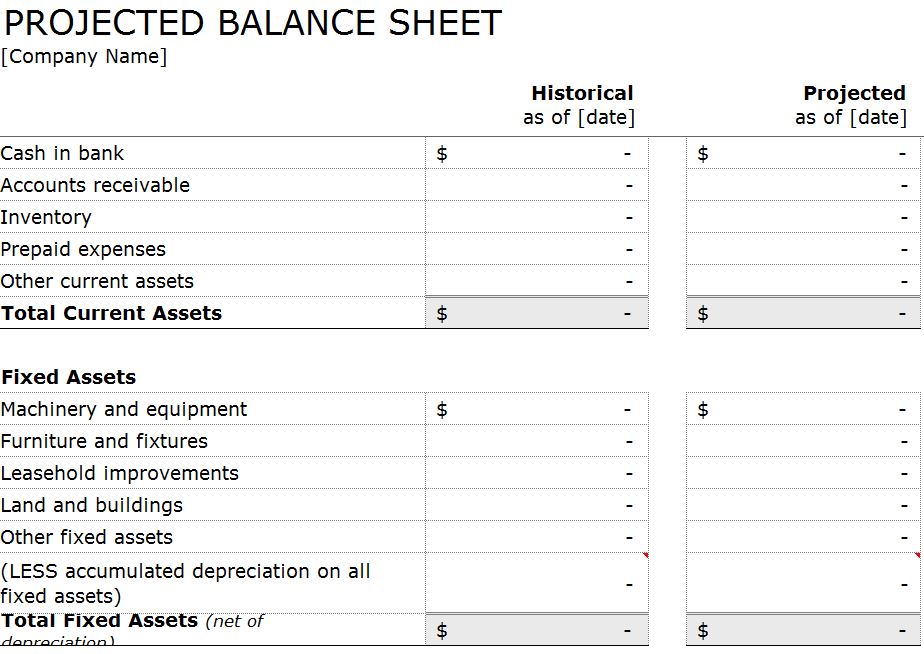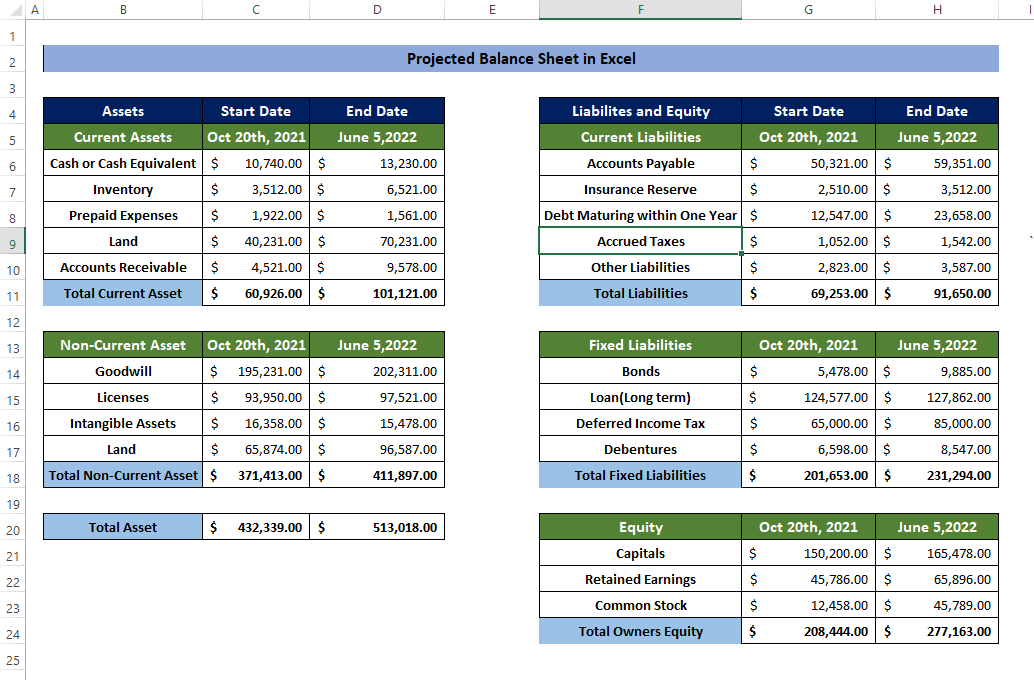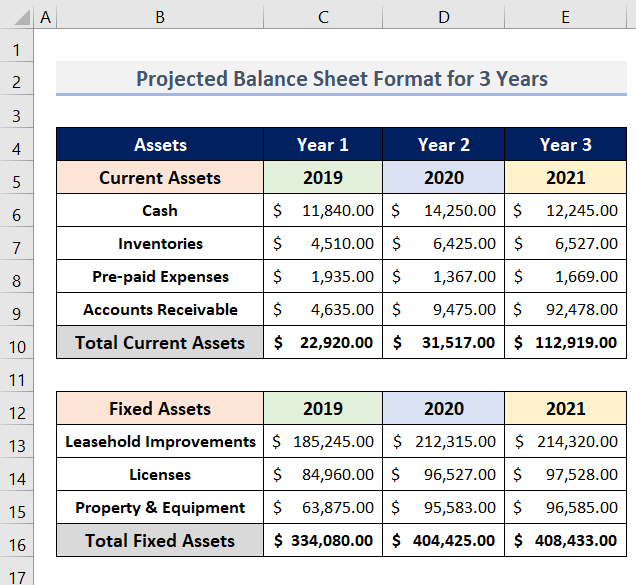A projected balance sheet serves the purpose of estimating a company’s future financial position by forecasting its assets, liabilities, and equity-based on expected future activities. It essentially provides a snapshot of the anticipated financial health of a business and aids in strategic planning and decision-making by allowing it to anticipate financial needs and plan for growth.
This article will explore the significance of a projected balance sheet and provide tips for creating a successful one.
What is a Projected Balance Sheet?
A projected balance sheet is a financial statement that estimates a company’s future financial position. It takes into account expected future activities, such as sales, expenses, investments, and financing, to forecast the company’s assets, liabilities, and equity.
This projection provides valuable insights into the anticipated financial health of the business and helps in strategic planning and decision-making.

Why is a Projected Balance Sheet Important?
A projected balance sheet is important for several reasons:
1. Strategic Planning:
By forecasting future financial positions, a projected balance sheet enables businesses to strategically plan for growth. It helps them identify potential financial needs and allocate resources accordingly. This allows businesses to make informed decisions about investments, expansions, and other strategic initiatives.
2. Decision Making:
A projected balance sheet provides valuable information for decision-making. It helps businesses evaluate the financial implications of different options and choose the most viable and profitable course of action. Whether it’s deciding on new product development, entering new markets, or making investment decisions, a projected balance sheet provides the necessary insights.
3. Anticipating Financial Needs:
By forecasting future financial positions, a projected balance sheet allows businesses to anticipate their financial needs. It helps them identify potential cash flow gaps, funding requirements, and areas where additional financial resources may be required. This enables businesses to proactively plan and secure the necessary funding to support their operations and growth.
4. Identifying Risks and Opportunities:
A projected balance sheet helps businesses identify potential risks and opportunities. By analyzing the projected financial positions, businesses can identify areas of vulnerability and take proactive measures to mitigate risks. Additionally, it allows businesses to identify areas of potential growth and capitalize on emerging opportunities.
5. Tracking Financial Performance:
A projected balance sheet serves as a benchmark for tracking financial performance. By comparing the projected financial positions with the actual financial results, businesses can evaluate their performance and identify areas of improvement. This helps in monitoring progress toward financial goals and making necessary adjustments to stay on track.
How to Create a Projected Balance Sheet?
Creating a projected balance sheet involves several steps:
1. Gather Historical Financial Data:
Start by gathering historical financial data, including balance sheets, income statements, and cash flow statements. This data will serve as a foundation for creating the projected balance sheet.
2. Identify Assumptions:
Identify the assumptions that will drive the projections. These assumptions can include projected sales growth rates, expense trends, financing arrangements, and other relevant factors that will impact the company’s financial position.
3. Forecast Revenue and Expenses:
Based on the identified assumptions, forecast the company’s revenue and expenses for the projected period. Take into account factors such as market conditions, industry trends, and company-specific considerations.
4. Project Assets and Liabilities:
Using the projected revenue and expenses, project the company’s assets and liabilities. Consider factors such as accounts receivable, inventory, accounts payable, loans, and other relevant financial items.
5. Calculate Equity:
Calculate the company’s equity by subtracting liabilities from assets. This will give an estimate of the company’s net worth for the projected period.
6. Prepare the Projected Balance Sheet:
Once the projections for assets, liabilities, and equity are calculated, prepare the projected balance sheet. Use a spreadsheet or accounting software to present the information in a clear and organized format.
7. Review and Refine:
Review the projected balance sheet for accuracy and completeness. Refine the projections as necessary based on new information or changes in assumptions. Regularly update the projected balance sheet to reflect the most current and accurate financial position.
Examples




Tips for Successful Projected Balance Sheet
Creating a successful projected balance sheet requires attention to detail and careful analysis. Here are some tips to consider:
- 1. Use Realistic Assumptions: Base your projections on realistic assumptions to ensure accuracy and reliability.
- 2. Regularly Update: Update the projected balance sheet regularly to reflect the most current financial position.
- 3. Seek Expert Advice: If you’re unsure about certain projections or calculations, consider seeking advice from a financial professional.
- 4. Keep It Simple: Present the information clearly and concisely, avoiding unnecessary complexity.
- 5. Consider Sensitivity Analysis: Perform sensitivity analysis to assess the impact of different scenarios on the projected financial position.
- 6. Monitor Actual Results: Compare the projected balance sheet with the actual financial results to evaluate performance and make necessary adjustments.
- 7. Use Visuals: Incorporate charts and graphs to visually represent the projected financial position for easier understanding.
Conclusion
A projected balance sheet is a valuable tool for strategic planning and decision-making. It provides businesses with insights into their anticipated financial health, allowing them to anticipate financial needs and plan for growth.
By following the steps outlined in this article and considering the tips provided, businesses can create successfully projected balance sheets that support their strategic goals and objectives.
Projected Balance Sheet Template – Download